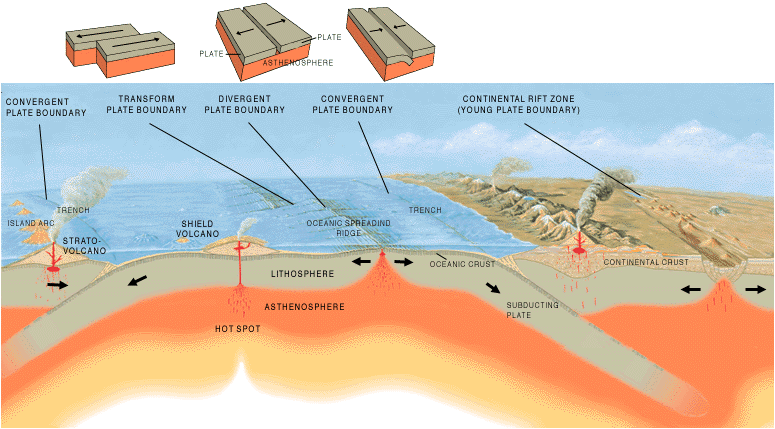
There are 3 primary types of Tectonic Plate boundaries:
-
Divergent boundaries;
-
Covergent boundaries;
-
Transform boundaries.
As the giant plates move, diverging [pulling apart] or converging [coming together] along their borders, tremendous energies are unleashed resulting in tremors that transform Earth’s surface. While all the plates appear to be moving at different relative speeds and independently of each other, the whole jigsaw puzzle of plates is interconnected. No single plate can move without affecting others, and the activity of one can influence another thousands of miles away. For example, as the Atlantic Ocean grows wider with the spreading of the African Plate away from the South American Plate, the Pacific sea floor is being consumed in deep subduction trenches over ten thousand miles away.
There are four different types of seismic zones corresponding to the four main types of plate boundary interactions: subduction zones as along the western coast of South America; strike-slip (transform) zones like the San Andreas system along the west coast of North America; zones of seismic activity along midocean ridges like the mid-Atlantic Ridge system; and continental-continental collision zones such as the Himalyan where the Indian subcontinent is ploughing into Asia.

